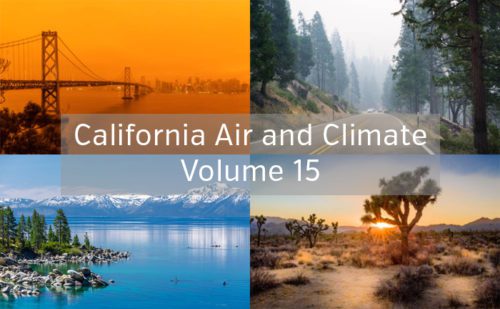California Air and Climate: CARB to Hold Second Public Workshop on Reducing Greenhouse Gas Emissions from Ride-Sharing Services; Adopts Zero-Emission Truck Rule; Requests Comments on At-Berth Vessel Regulations
July 2020
California Air and Climate, Vol. 15
CARB to Hold Second Public Workshop on Clean Miles Standard to Reduce Greenhouse Gas Emissions Associated with Ride-Sharing Services
On July 17, 2020, the California Air Resources Board (CARB) will hold another public workshop regarding CARB’s development of the Clean Miles Standard, which aims to reduce greenhouse gas (GHG) emissions from transportation network company (TNC) services pursuant to CARB’s requirement to implement SB 1014 (2018). TNCs provide prearranged transportation services for compensation by connecting passengers to drivers through online-enabled applications or platforms (e.g., Uber, Lyft and other ride-sharing platforms). According to CARB, the transportation sector accounts for almost 50 percent of GHG emissions in California when accounting for fuel production, with light-duty vehicles making up 70 percent of the transportation sector’s direct emissions. Under the Clean Miles program, CARB hopes to encourage the use of zero-emission vehicles and vehicle miles traveled (VMT) reduction strategies, as well as account for automated vehicles in TNCs. As we previously reported, CARB’s Clean Miles Standard is part of a recent trend of actions and publicly held workshops aimed at reducing GHG emissions from a variety of sources throughout California (e.g., locomotives, ocean vessels, commercial harbor craft, and zero-emission trucks). Following the July 17 workshop, CARB staff will request stakeholder comments on the Clean Miles Standard through August 20, 2020. For additional information, please click here.
CARB Adopts Zero-Emission Truck Rule
On June 25, 2020, CARB adopted the Advanced Clean Trucks regulation, mandating sales of zero-emission trucks. (We discussed this proposal in an earlier post.) Starting in 2024, the regulation will require an increasing percentage of truck sales, from pickups to heavy duty tractors, to be zero-emission. Initially, less than 10 percent of a manufacturer’s sales must be zero-emission, but by 2035 this will increase to as much as 75 percent of Class 4-8 trucks. The regulation only governs sales in California, however a coalition of northeastern states testified in support of the regulation and could also adopt the standards. More information is available here.
CARB Requests Comments on Additional Changes to Proposed At-Berth Regulations
On July 10, 2020, CARB published additional changes to its proposed regulations for at-berth vessels. The regulations will require additional reductions in emissions from auxiliary diesel engines used to power vessels while docked at California ports. (We reported on this proposed regulation in an earlier post.) The latest changes would delay onset of the new regulations from 2021 to 2023 for refrigerated, cargo and passenger vessels and from 2024 to 2025 for roll-on roll-off vessels. Comments on the changes are due July 27. More information is available here.
Second Appellate District Expands Baseline Analysis in Upholding Environmental Impact Report for Refinery Project Intended to Help Reduce Air Pollutants
On April 7, 2020, the Second Appellate District upheld the South Coast Air Quality Management District’s (Air District) Environmental Impact Report (EIR), which the Air District prepared to analyze the environmental impacts of a refinery project that was intended to increase compliance and help reduce air pollution. Communities for a Better Environment v. So. Coast Air Quality Mgmt. Dist., Case No. B294732 (Apr. 7, 2020). The project applicant owns and operates two adjacent oil refining facilities in Southern California, and sought to improve the integration of both facilities to allow flexibility in product outputs, which also increased the refinery’s compliance with air regulations, and thus helped reduce air pollutants. As explained in greater detail here, the decision is particularly noteworthy because the court appears to have expanded the “baseline” analysis tied to air emissions, which is used to measure pre-project vs. post-project impacts to the existing environment.

